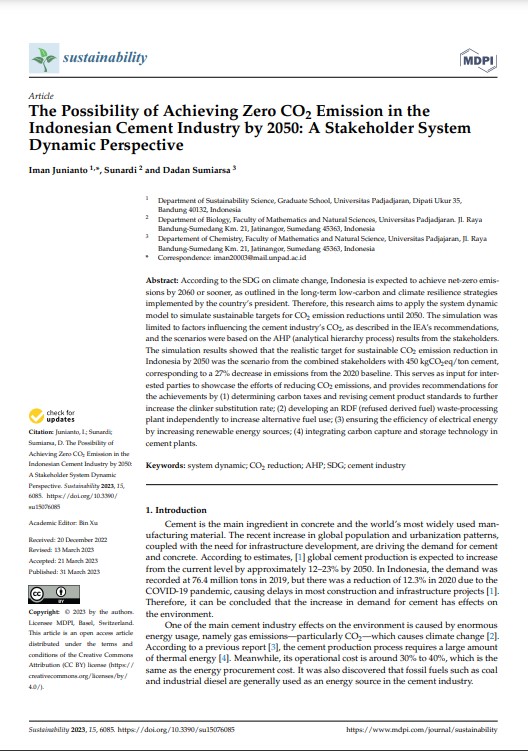
Keyword(s)
AHP , Cement , CO2 reduction , Net-zero , SDG , System Dynamic
Author(s)
1) Iman Junianto, 2) Sunardi, 3) Dadan Sumiarsa
Country(ies)
Publisher
Published Date
Access
DOI
According to the SDG on climate change, Indonesia is expected to achieve net-zero emissions by 2060 or sooner, as outlined in the long-term low-carbon and climate resilience strategies implemented by the country’s president. Therefore, this research aims to apply the system dynamic model to simulate sustainable targets for CO2 emission reductions until 2050. The simulation was limited to factors influencing the cement industry’s CO2, as described in the IEA’s recommendations, and the scenarios were based on the AHP (analytical hierarchy process) results from the stakeholders. The simulation results showed that the realistic target for sustainable CO2 emission reduction in Indonesia by 2050 was the scenario from the combined stakeholders with 450 kgCO2eq/ton cement, corresponding to a 27% decrease in emissions from the 2020 baseline. This serves as input for interested parties to showcase the efforts of reducing CO2 emissions, and provides recommendations for the achievements by (1) determining carbon taxes and revising cement product standards to further increase the clinker substitution rate; (2) developing an RDF (refused derived fuel) waste-processing plant independently to increase alternative fuel use; (3) ensuring the efficiency of electrical energy by increasing renewable energy sources; (4) integrating carbon capture and storage technology in cement plants.